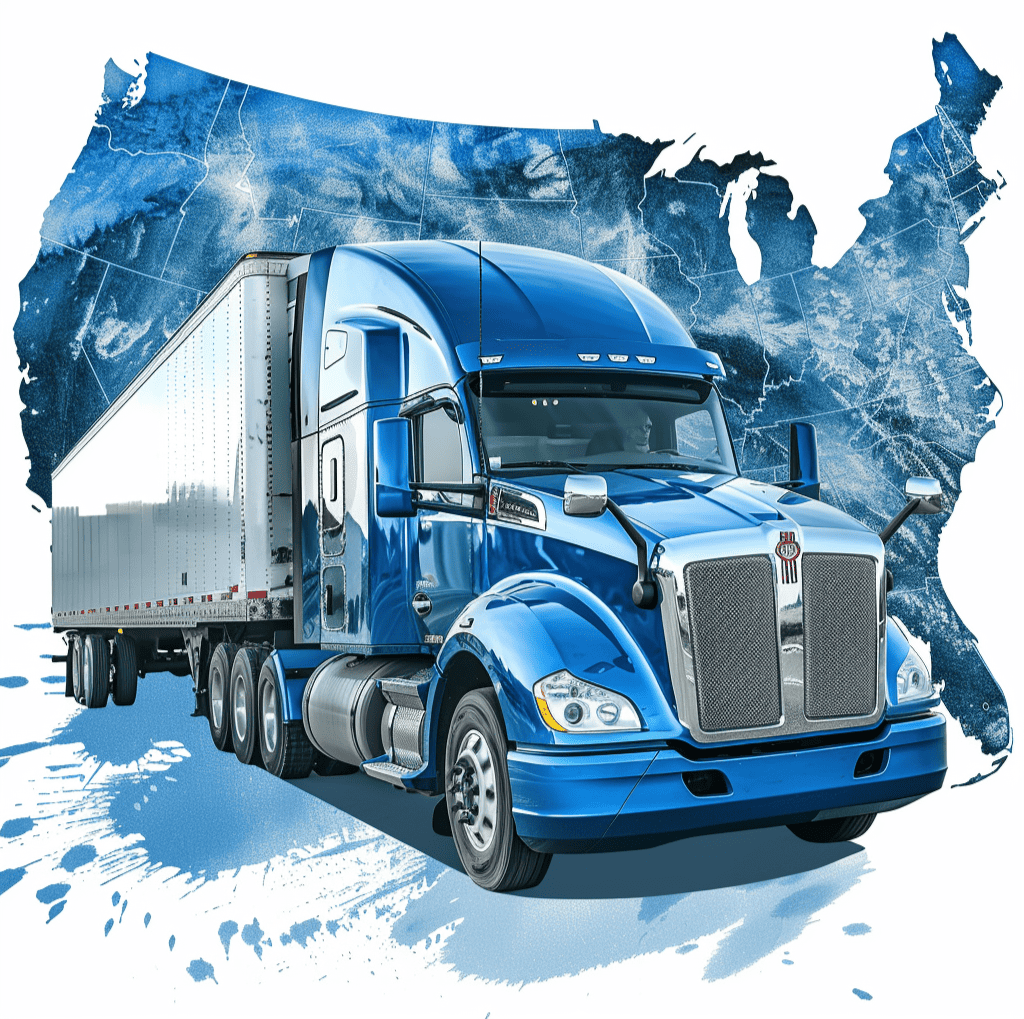Montana Truck Restricted Routes and Regulations
Freedom Heavy Haul can offer expedited Pickup and Delivery for any size shipment anywhere in the USA. Contact us today for No Hassle, No Pressure Pricing.
Montana’s vast landscapes and rugged terrains present unique challenges for the transportation industry, especially for trucking. The state’s Department of Transportation (MDT) enforces specific regulations to ensure the safety of its infrastructure and the efficiency of cargo transportation. This article explores Montana truck restricted routes, regulatory framework, permit requirements, compliance strategies, and available resources to assist carriers in navigating these challenges effectively. For more details on navigating Montana’s regulations, visit overweight vehicle requirements in Montana.
Montana Truck Restricted Routes and Regulations
Ensuring the safety of Montana’s roadways and the longevity of its infrastructure is a paramount concern for the Montana Department of Transportation. The introduction of load and speed restrictions on certain routes is a critical component of this effort, designed to prevent damage during vulnerable periods such as seasonal thaws.
Introduction to Load and Speed Restrictions
Load and speed restrictions in Montana are primarily seasonal, reflecting the state’s response to the freeze-thaw cycles that weaken road structures. These measures help preserve the integrity of the roadways during critical times. Adhering to regulations for overweight vehicles in Montana ensures that your operations remain compliant and efficient.
Comprehensive Overview of Policy
The MDT’s policies on load and speed restrictions aim to balance infrastructure protection with operational efficiency. These policies outline axle weight limits, speed restrictions, and other safety requirements. Learn how to navigate these overweight vehicle requirements in Montana to avoid penalties and delays.
Detailed Classification of Highway Restrictions
The restrictions are categorized based on the severity of road conditions and the susceptibility of highways to damage. They range from reduced speed limits on sections showing distress to more severe restrictions like lower axle weights on roads particularly vulnerable to heavy loads.
Compliance Mechanisms and Monitoring
MDT encourages compliance through a combination of industry cooperation and enforcement mechanisms. This includes the use of radar-equipped vehicles for monitoring and the requirement for trucking companies to educate their drivers about adhering to these restrictions.
Cooperation Between the Trucking Industry and MDT
The effectiveness of these regulations relies heavily on the cooperation between the trucking industry and MDT. This collaborative approach ensures that the restrictions are both respected and enforced, contributing to the overall goal of road safety and infrastructure preservation.
Permitting Process for Oversize and Overweight Vehicles
For vehicles exceeding standard size or weight limits, navigating Montana’s roads requires obtaining the appropriate permits. MDT offers a streamlined process for this, ensuring that carriers can comply with regulations while minimizing disruptions to their operations.

Criteria for Permit Issuance
The criteria for permit issuance are straightforward, focusing on the dimensions and weight of the load. These permits are essential for any vehicle that exceeds Montana’s legal limits for width, length, height, or weight.
Functionality of the ARS Bid-Route System
The Automated Routing System (ARS) Bid-Route is a tool designed to assist carriers in planning their travel routes. This system checks for potential obstacles such as height restrictions and ongoing construction projects, ensuring that oversized or overweight loads can travel safely and efficiently.
Streamlined Online Permitting via MT ePART
MTD’s MT ePART system simplifies the permitting process by offering a user-friendly online platform. It helps carriers save time and stay compliant with Montana’s strict heavy haul and overweight vehicle regulations.
Diverse Fee Structure and Permitting Options
The fee structure for permits is designed to accommodate the diverse needs of carriers, offering options for single trips, monthly permits, or annual terms. This flexibility supports the efficient operation of the trucking industry within the state.
Specifics of the Montana Winter Weight Allowance
Montana’s Winter Weight Allowance enables carriers to transport heavier loads safely during colder months when road damage risks are lower. Understanding how to utilize this allowance within Montana’s overweight vehicle guidelines ensures compliance and operational efficiency.
Ensuring Compliance with Federal and State Regulations
MDT works closely with carriers to align state requirements with federal regulations, protecting infrastructure and maintaining safety. For assistance with compliance, explore overweight vehicle regulations in Montana.
Preventative Measures and Compliance
MDT’s approach to ensuring road safety and infrastructure protection includes a focus on preventative measures and fostering compliance among carriers.

Strategies for Route Verification and Planning
Effective route planning is essential for avoiding disruptions and ensuring the safe transport of oversized or overweight loads. MDT provides resources and tools to assist carriers in selecting routes that accommodate their specific needs while adhering to state regulations.
Up-to-Date Federal Information Verification
Carriers are encouraged to keep their federal information, such as USDOT numbers and company details, current. This alignment with federal databases is crucial for streamlining the permitprocess and ensuring that carriers can quickly obtain the necessary permits for their loads.
Guidance for Utilizing Pilot Cars
For particularly large or cumbersome loads, the use of pilot cars is recommended or required to ensure the safe passage of oversized vehicles. MDT provides guidelines and training resources for pilot car operators, emphasizing the importance of these vehicles in maintaining road safety.
Importance of Bridge Structural Integrity Monitoring
MDT monitors bridge integrity to assess load capacities and prevent infrastructure damage. This data influences route planning and permitting decisions under Montana’s overweight vehicle requirements.
Resource Availability and Support Systems
MDT provides extensive resources to assist carriers in meeting regulatory requirements. Utilizing tools like GIS mapping and ARS Bid-Route can help navigate restricted routes and overweight vehicle compliance.

Accessibility of MDT Contacts for Assistance
For questions about permits or routes, MDT’s contact center is a vital resource. Staying informed about Montana’s heavy haul regulations ensures smoother operations and avoids compliance issues.
Utilization of Maps for Safe Route Planning
MDT provides an array of mapping resources, including road condition maps and interactive GIS tools, to assist carriers in planning safe and efficient routes. These tools are invaluable for identifying restricted routes and planning alternatives that comply with state regulations.
Educational and Training Resources for Carriers
MDT offers training programs for truck operators and pilot car drivers, emphasizing safe practices and adherence to overweight vehicle requirements for heavy hauls.
Key Online Tools for Compliance and Information
MDT’s website serves as a central hub for information and online tools designed to facilitate compliance with trucking regulations. From the ARS Bid-Route system to the MT ePART permitting platform, these tools are designed to streamline the permitting process and support safe, efficient transportation across Montana. In conclusion, Montana’s approach to regulating truck restricted routes and ensuring the safety of its transportation infrastructure is comprehensive and multifaceted. Through a combination of regulatory policies, permit systems, and supportive resources, MDT works to protect the state’s roads and bridges while accommodating the needs of the trucking industry. By adhering to these regulations and utilizing the available resources, carriers can contribute to the safety and efficiency of Montana’s transportation network.







